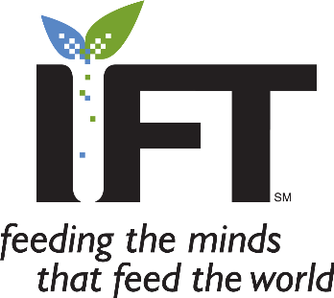History

Before the Department of Food Science and Technology was created in 1968 by the Virginia Tech Board of Visitors, there were food science teaching, research, and extension programs spread throughout the Departments of Horticulture, Dairy Science, Animal Science, and Poultry Science.
In the mid-1950's and early 1960's there were eight full time faculty positions in those departments whose responsibilities fell essentially in the area of food science. All faculty had active research programs in the food science area which were geared to assist the food industries in Virginia. There was also a functioning food industry advisory committee to the Food Technology section of the Department of Horticulture.
1957
The Department of Horticulture establishes a food technology option in its teaching program. That option includes undergraduate courses taught by Dr. Anthony Lopez, aided by Professor Charles Wood, in food processing, chemistry, analysis, and packaging. Later, a course in fruit and vegetable processing taught by Dr. Bill Cooler is introduced. The food technology option adds courses in dairy, meat and poultry processing, and agricultural engineering fundamentals.

1959
The Institute of Food Technologists (IFT) recognizes Virginia Polytechnic Institute as having a program in food science and technology that complied with the recommendations of IFT for programs eligible to receive the organization's scholarships. Two IFT undergraduate scholarships are awarded to students in the option in the early 1960s. Graduate programs leading to both M.S. and Ph.D. degrees in the food technology option of the Department of Horticulture are also instituted.

1950's to mid-1960's
The research facilities feature a poultry processing plant, a meat slaughtering facility, a fruit and vegetable processing laboratory, food chemistry, and food analysis laboratories. The 5,000 square-foot fruit and vegetable processing laboratory is finished in 1965. It is made possible by a special appropriation by the Virginia legislature which is spearheaded and strongly supported by food processors located in the Eastern Shore of Virginia.

Mid-1960's
The Virginia legislature appropriates funds for constructing a second addition to the Food Technology building to house a dairy processing plant laboratory for food science research in the Departments of Horticulture and Animal Science.
1966
Led by Dr. Lopez, an addition to the then existing pilot plant and laboratory facilities is designed to bring together faculty and staff from the Departments of Horticulture, Animal Science, Dairy Science, and Poultry Science. The Virginia Farm Bureau and the Virginia Division of Industrial Development are the principle supporters of this second Virginia legislature appropriation for construction funds for food science and technology.

1968
The Board of Visitors establishes the Department of Food Science and Technology at Virginia Tech based on disciplines previously housed in the Departments of Horticulture, Dairy Science, Animal Science, and Poultry Science. Facilities included in the Department are four pilot plants (meats, poultry, dairy, and fruit and vegetable processing) and a food analysis laboratory.

1970
Construction on the dairy technology facility, laboratory, and office wing are completed in the Food Science building.
1975-77
The teaching laboratory, food biochemistry laboratory, and offices are completed. The meat pilot plant is remodeled to conform to state regulations for establishments processing meat.

1991
Dr. Susan Duncan establishes the Sensory Evaluation Laboratory, bringing a new discipline into the department's research portfolio.
1994
The department branches out into wine with the hire of a faculty enology position and the completion of the research wine lab. This position was added from the Department of Horticulture.

2006
FST expands outside of the Food Science building, establishing additional research labs in Fralin Hall and the Integrated Life Sciences Building (ISLB) in the Virginia Tech Corporate Research Center.
2009
The meat processing and slaughter facilities are moved to the Department of Animal and Poultry Sciences.

2014
The department expands into the new Human and Agricultural Biosciences Building (HABB1) which is shared with the Department of Biological Systems Engineering. The new facility, located across the street from the Food Science building, provides the department with a new 7,100 square-foot food processing pilot plant, a 2,200 square-foot food safety pilot plant, a 1,278 square-foot state-of-the-art sensory evaluation laboratory, and a variety of offices, conference rooms, and additional laboratories. The 88,200 GSF building is the first of four buildings planned in this area of campus dedicated to the demands of human and agricultural biosciences research and discovery.
2017
The Master Brewers Association of the Americas formally recognizes FST's food and beverage fermentation degree option, an honor bestowed upon only a handful of such programs in North America.

2019
Successful Student, an online higher education resource, listed the department's undergraduate and master's programs among the top 10 in the country. FST's undergraduate progam ranked 9th in the U.S., and its master's program ranked 8th.
2020
FST partners with Hardywood Park Craft Brewery to produce Fightin' Hokies Lager, the department's first licensed product and the university's first licensed alcoholic beverage.
2022
FST is one of a handful of departments to pilot Virginia Tech's Bridge Experience Program, an initiative requiring all undergraduate students to have completed a number of experiential learning opportunities before graduation.

Explore FST
-
General Item
-
General Item
-
Home Item
-
General Item
-
General Item
-
General Item
-
General Item
-
General Item



.jpg.transform/s-medium/image.jpg)



.jpg.transform/s-medium/image.jpg)

